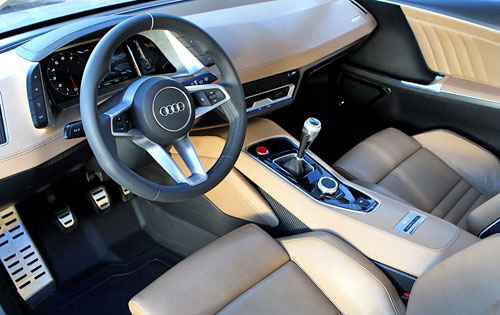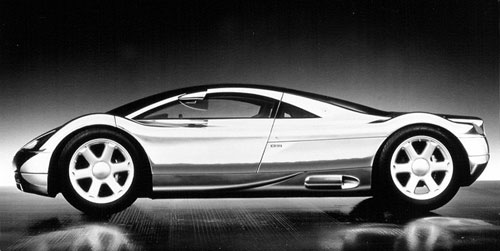Audi Concepts: The RSQ


More than any other automaker, Audi’s styling gives us a sense of “you can get there from here.”
What do I mean? Examine the various generations of Audi cars and there’s a clear aesthetic progression from one to the next. There’s no jumping off the deep end design-wise, a la Bangle-helmed BMW in the 2000s; instead, Audi’s corporate styling themes seem to move forward in even, incremental steps. And while this approach sometimes raises the question of whether their aesthetic evolution is too gradual, the easily-traceable progression makes it easier to extrapolate Audi’s future styling direction. In other words, it’s easier to fill in the gaps between Audi’s present lineup and the look of its concept cars, which in turn makes the concepts seem nearer, less fanciful and more real. While that might be a downside for those who enjoy concept cars as pure flights of fancy, aesthetic puff pieces with no connection to an automaker’s current offerings, most car buffs at some point imagine themselves behind the wheel of a car rotating slowly on the dais. Cultivating that connection means that a less extreme suspension of disbelief is needed to fantasize about driving a concept car, and renders it more attainable, so to speak, and thus more desirable.


Take the car featured in this post, the RSQ. Created in 2004 especially for the Will Smith sci-fi action flick I, Robot (itself nothing to write home about, but that’s another matter), the idea behind the car was to create a realistic vehicle for the year 2035, when the film is set. Naturally, it has futuristic overtones, especially the spherical wheels. But because of Audi’s progressive design philosophy, there’s still a connection with their present-day cars; when you see it there’s a sense that, “Yeah, I could drive that.” That attainable quality stands the RSQ in contrast to other sci-fi movie cars like Lexus’s vehicle in the Tom Cruise flick Minority Report. Compared to Audi’s concept, Lexus’s offering looks downright alien. Now, does that mean I consider the RSQ objectively desirable, in that I would choose it over other, present-day Audis? No, but I still appreciate its visual kinship with those models.
Image credits: netcarshow.com, audiworld.com
Editor’s note: This post is part of an ongoing series discussing Audi’s rich history of noteworthy concept cars. Read the other installments here:
















